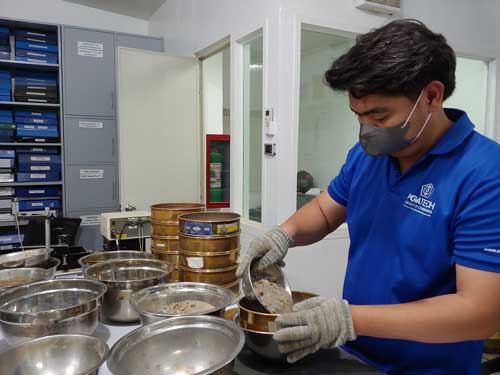Sieve analysis is a mechanical method in soil testing that determines the particle size distribution of a soil sample. This process involves passing the samples through sieves of standard sizes. The sieve sizes progressively become smaller from 125 mm all the way to 75 microns. Specific sizes and numbering of these sieves are:
|
Designation / Sieve No. |
Opening Size (mm) |
|
5 in |
125 |
|
3.5 in |
90 |
|
2.5 in |
63 |
|
2 in |
50 |
|
1.5 in |
37.5 |
|
1 in |
25 |
|
¾ in |
19 |
|
⅜ in |
9.5 |
|
¼ in |
6.3 |
|
No. 4 |
4.75 |
|
No. 8 |
2.36 |
|
No. 16 |
1.18 |
|
No. 30 |
600 microns |
|
No. 50 |
300 microns |
|
No. 100 |
150 microns |
|
No. 200 |
75 microns |

To ensure quality and accuracy, a standard procedure is followed.
1. Sample Collection
The sample should be representative of site conditions and must be sufficient to ensure accuracy in the analysis.
2. Sieves
Standard sieves that meet specifications are stacked in ascending order of mesh size.
3. Sieving Process
The sample is placed on top of the sieve stack and is then shaken for a fixed duration. Shaking must have a pattern and should be uniform all throughout the process.
4. Weighing
After the sieving process, the sample retained on each sieve is measured by the difference between the final weight and the empty sieve weight. The weight of material in each sieve is recorded.
5. Particle Size Distribution
Using the recorded weight, the percentage of each size can be calculated. These percentages are then plotted with the sieve opening sizes on a particle size distribution curve.
This method is crucial in evaluating soil properties and its suitability for various engineering applications.
